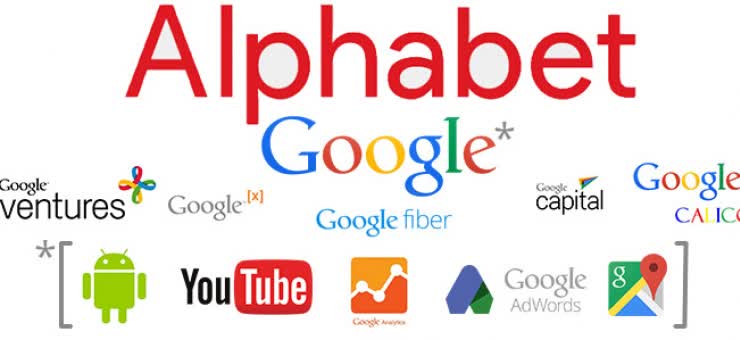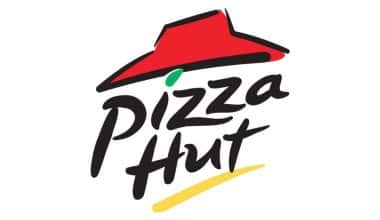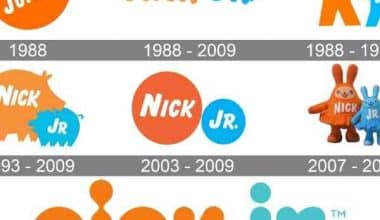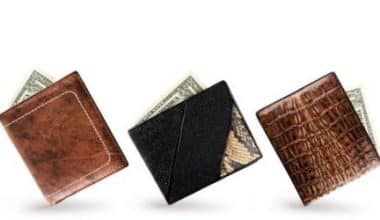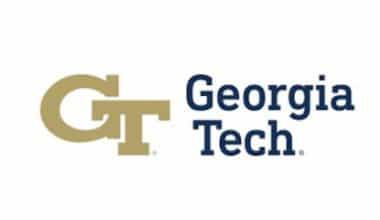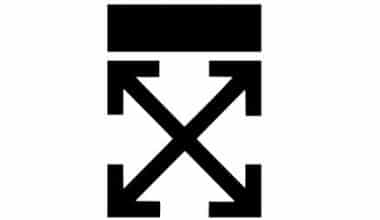More than seven years have passed since Google restructured to form a new company, Alphabet, Inc. As of January 2022, Alphabet was reported to be a massive conglomerate with a market capitalization of $1.839 trillion. It is also ranked the world’s third most valuable company, trailing only Microsoft and Apple in size. But let’s take a look at all that has contributed to their present revenue status. Here is a complete list of Alphabet, Inc.’s subsidiaries. It encompasses everything from self-driving cars to hot air balloons that beam the internet.
A Short History
Alphabet, Inc. officially became the parent company of Google and several former Google subsidiaries in October 2015. The two co-founders of the search engine behemoth remained Alphabet’s controlling shareholders, board members, and employees.
Larry Page described the Alphabet company in the public announcement as a collection of different companies, with Google playing a pivotal role. With this move, Google’s predictions that it would become more slimmed down became true and based on facts.
Larry Page wished for Google to become more transparent and accountable. This was only possible if Google and its services were completely separate from the other companies that are now part of Alphabet Inc.
This type of corporate restructure was inspired by Warren Buffett’s Berkshire Hathaway management structure. Larry Page and Sergey Brin met with Warren Buffett in Omaha and discussed their companies’ similar concepts.
Page and Brin decided to step down from their respective roles in December 2019, but they retained the majority vote on the board of directors.
An Overview of Alphabet
With a market capitalization of $1.75 trillion as of March 10, 2022, Alphabet has become one of the world’s largest technology conglomerates.
For 2021, the company reported a net income of $76 billion on revenue of $257.6 billion.
Advertising accounts for the vast majority of Alphabet’s revenue. The company provides performance advertising, allowing advertisers to connect with their users in a measurable way. It also sells brand advertising, which aims to increase users’ brand awareness and affinity.
Advertising is thus central to Alphabet’s strategy, and it has guided many of the company’s acquisition decisions, including the purchase of DoubleClick in 2008 (see below).
However, Google earns money from various sources, including app sales, in-app purchases, hardware, and licensing and service fees, including those from Google Cloud and other products.
To strengthen these businesses, the company has made acquisitions.
Alphabet is constantly on the lookout for new technologies that can help it expand its business portfolio. Acquiring smaller companies frequently eliminates emerging competitors, reducing Alphabet’s competition. This is one of the reasons Alphabet is currently the subject of an antitrust lawsuit filed by the United States. In October 2020, the Department of Justice (DOJ) and eleven state Attorneys General will convene.
We look at the company’s major acquisitions in greater detail below. With the exception of YouTube, Alphabet does not break out the revenue that these purchases currently contribute to the company.
What Does Alphabet Own?
Mandiant
Acquisition Cost: $5.4 billion.
Date of acquisition (announced but not yet closed): March 8, 2022
On March 8, 2022, Google announced its intention to purchase publicly traded cybersecurity firm Mandiant, Inc. (MNDT) for $23 per share, or approximately $5.4 billion. The company, which focuses on cybersecurity testing and incident response, will be integrated into Google’s cloud computing business to help improve cloud data security.
FireEye paid approximately $1 billion for Mandiant in 2013.
In June 2021, FireEye sold its FireEye branded products business and name to private equity firm Symphony Technology Group for $1.2 billion, leaving the publicly traded company with the Mandiant Solutions software business.
The company’s name was changed back to Mandiant in October 2021.
Microsoft (MSFT) was reportedly interested in acquiring Mandiant in February 2022.
Google’s $23 per share offer represents a 45% premium over where shares traded on February 1, 2022 (before the Microsoft announcement).
If the deal goes through, it will be the company’s second-largest acquisition in history, trailing only Motorola Mobility, which it purchased for $12.5 billion in 2012. Google expects the transaction to close by 2023, assuming shareholder and regulatory approval.
Fitbit
Acquisition Cost: $2.1 billion. Date of acquisition: January 14, 2021
Fitbit was founded in 2007 by James Park and Eric Friedman to develop a wearable product that would use wireless technology to improve users’ health and fitness. The company’s offerings include smartwatches, armband fitness trackers, a digital fitness tracking application, and related gear, accessories, and services.
After announcing the deal in November 2019, Google closed the Fitbit acquisition in January 2021, adding to its wearable-device lineup following its acquisition of Timex smartwatch technology in 2019.
The transaction was completed after European Union antitrust regulators approved the acquisition with conditions to protect users’ health data and preserve competition in the wearable tech sector. Google emphasized that the acquisition is about devices, not data, and promised that user data would not be used for Google ads.
Looker
Acquisition Cost: $2.6 billion. Date of acquisition: February 13, 2020
Lloyd Tabb founded Looker in 2011 to help businesses easily extract and analyze data. Most legacy business intelligence systems demanded engineering and programming expertise from users to extract and analyze data. Looker streamlined the process by modifying programming queries to read more like natural languages like English. Users could now perform data analytics without having to “speak” code.
In June 2019, Google announced its intention to acquire Looker. Looker was acquired by Google in 2020, and its capabilities will be leveraged through the Google Cloud service. Looker at Google Cloud accelerates customers’ ability to analyze data, deliver business intelligence, and build data-driven applications.
Nest
Acquisition Cost: $3.2 billion.
Date of Acquisition: January 13, 2014
Tony Fadell and Matt Rogers founded Nest Labs in 2010. Fadell and Rogers left Apple’s iPod and iPhone development divisions to launch a technology company that revolutionized the thermostat: turning it into a sensor-driven, WiFi-enabled, learning, and programmable device.
Google bought Nest in 2014 and merged it with Google’s Home division to form Google Nest, which sells a variety of innovative home products such as security alarm systems, security cameras, WiFi routers, and home assistance devices.
Waze
Acquisition Cost: $966 million. Date of Acquisition: June 11, 2013
Waze was founded in 2008 in Israel. The crowd-sourced mobile traffic advisory device and navigation service were acquired by Google five years later when the company’s own Google Maps app was already seven years old.
While acquiring Waze was one way to eliminate competition, Google also saw Waze’s traffic-updating features as novel additions to Google Maps.
Since then, Google has been able to monetize the service by selling ad services to businesses, such as ads that alert drivers when they are near participating businesses.
In early 2021, Waze had over 140 million monthly active users, up from 10 million when it was acquired.
DoubleClick
Acquisition Cost: $3.1 billion. Date of Purchase: March 11, 2008
DoubleClick was founded in 1996 and became one of the dot-com era’s stock market darlings as a pioneer in the first generation of online advertising in the 1990s. Hellman & Friedman paid $1.1 billion in a “take-private” transaction to become the company’s majority owner in 2005.
Google purchased DoubleClick in 2008 to improve its customers’ analysis and ad-targeting capabilities. Google retired the DoubleClick brand name in 2018 and merged it with Google’s AdWords brand, making Google Ads the primary tool for advertisers.
YouTube
Acqusition Cost: $1.65 billion. Date of Acquisition: November 13, 2006. Ad revenue on YouTube in 2019: $15.1 billion
YouTube was founded in 2005 by three former PayPal employees who believed ordinary people would enjoy sharing their home videos online. It had already served over 100 million videos per day by the summer of 2006. YouTube began looking for a buyer due to both technical issues that come with rapid growth and a lack of commercial success.
Meanwhile, Google’s video platform, Google Video, which debuted in 2005, had struggled to gain traction.
Google acquired YouTube in late 2006, providing it with a new, powerful video platform. YouTube has grown into a significant source of ad revenue for Alphabet, as well as revenue from premium and YouTube TV subscriptions. YouTube’s ad revenue is expected to be $28.9 billion in 2021.
Other Products/Companies Alphabet Owns
Admob
AdMob is a mobile advertising company founded in 2006 by Omar Hamoui, a Wharton School of Business student
The company’s headquarters were initially in Mountain View, California, but were later relocated to San Mateo. AdMob began as a platform that allowed mobile app developers to monetize their apps through advertising.
Google paid $750 million for Admob in 2009, outbidding rival Apple. Four years later, the company updated the Admob platform with AdSense technology to help app developers earn more ad revenue.
Kaggle
Kaggle is an online community for data scientists, machine learning engineers, and other enthusiasts where they can compete in science competitions, work on open-source projects, and access a variety of datasets.
It was founded in 2010 by Anthony Goldbloom, an Australian data scientist, and Ben Hamner, a software developer.
The community began with an inaugural machine learning competition, with subsequent competitions used to improve gesture recognition for Microsoft Kinect and further HIV and traffic forecasting research, among other initiatives.
Google Chief Scientist Fei-Fei Li announced in March 2017 that Kaggle and its 800,000-user community would join Google Cloud.
Sidewalk Labs
Sidewalk Labs is an urban planning and infrastructure firm whose mission is to address issues such as energy consumption, traffic congestion, and high living costs.
Daniel Doctoroff founded Sidewalk Labs in 2015. Doctoroff is a former CEO of Bloomberg L.P. and an American businessman, urban planner, and Deputy Mayor in the administration of New York City Mayor Michael Bloomberg.
Google absorbed Sidewalk Labs after Doctoroff stepped down due to ill health in late 2021. The company’s core products were later incorporated into Google’s urban sustainability efforts, and Alphabet spun out Sidewalk’s Canopy Buildings project as a separate company.
Calico
Calico Life Sciences LLC is a Google subsidiary specializing in health research and development, biotechnology, and the life sciences. In Google’s 2013 Founders Letter, Larry Page stated that the company’s core focus is “health, well-being, and longevity.”
Bill Maris, an entrepreneur and venture capitalist who also served as the company’s VP of Special Projects, founded Calico as a Google project in 2013. Calico’s current CEO is Arthur D. Levinson, Apple Inc.’s Chairman.
CapitalG
Alphabet’s independent growth fund is known as CapitalG. Founded in 2013 as Google Capital, the firm went public in 2014 and was renamed after the Alphabet restructure in 2016.
David Lawee (a former Google VP of Corporate Development and the company’s first VP of Marketing) founded CapitalG. Lawee was joined by partners Gene Frantz, Derek Zanutto, Jesse Wedler, and Laela Sturdy, a former Google Director of Sales and Business Operations.
The company’s investment strategy focuses on emerging, long-term technology trends that have the potential to disrupt their respective industries.
SurveyMonkey, Credit Karma, Glassdoor, Duolingo, Snap Inc., Airbnb, Stripe, Robinhood, Lyft, and NEXT insurance are among CapitalG’s notable investments.
DeepMind
DeepMind is a London-based AI research lab founded by Demis Hassabis, Shane Legg, and Mustafa Suleyman.
The company began by developing neural networks that learned to play early video games and beat human players at more complex games like Go.
Google paid an estimated $400 million for DeepMind in 2014. Hassabis stated that the acquisition would “allow us to turbo-charge our mission to harness the power of machine learning tools to tackle some of society’s toughest problems and help make our everyday lives more productive and enjoyable.”
Google Fiber
Google Fiber is a subsidiary that provides fiber-to-the-premises broadband internet and IPTV to homes in the United States. In 2011, the service was first made available to Kansas City, Kansas residents as an experimental project to provide ultra-fast internet access.
However, at The New York Times Dealbook Conference in December 2012, Google Executive Chairman Eric Schmidt stated that Google Fiber had become a viable business model.
This was undoubtedly aided by Netflix’s designation as America’s most consistently fast ISP, with an average speed of 2.55 megabits per second.
Google Fiber is now available in Alabama, Arizona, California, Colorado, Florida, Georgia, Illinois, Iowa, Nebraska, North Carolina, Tennessee, Texas, Utah, and Washington, among other states.
Wing
Wing is a Google subsidiary that specializes in drone delivery and unmanned air traffic control systems. The company began as a Google X project and is now known for designing, manufacturing, and deploying lightweight delivery drones.
Aircraft are self-sufficient in the sense that they use advanced vision to understand their surroundings. They can also plan their routes, troubleshoot system errors, and respond to delivery requests on the fly.
Wing was the first drone delivery company approved by the Federal Aviation Administration. The certification allowed the company to operate as an airline, and has since made over 300,000 deliveries in the United States, Australia, and Finland.
Verily Life Sciences
Verily Life Sciences (formerly Google Life Sciences) is an Alphabet Inc. subsidiary established in 2015. Until Sergey Brin announced its separation as an independent subsidiary, Google Life Sciences was a division of Google X.
Verily aims to improve healthcare outcomes for people worldwide by combining technology and science. The company develops innovative solutions to complex health problems associated with chronic and infectious diseases.
Smart contact lenses for glucose monitoring, wearable devices for tracking tremors in Parkinson’s disease patients, and the development of a COVID-19 testing program are among Verily’s notable projects.
GV Management Company
GV Management Company is a Silicon Valley-based venture capital firm previously known as Google Ventures. It was founded in 2009 as Google’s venture capital arm, but like Verily, it became an independent entity within Alphabet in 2015.
GV invests in seed, venture, and growth-stage companies in various industries, including healthcare, artificial intelligence, software, hardware, life sciences, transportation, agriculture, and cyber security. Companies in its portfolio include GitLab, Verve, Stripe, Bowery, Dapper Labs, Determined AI, and Nimble.
Intrinsic Innovation Technology
Intrinsic is an Alphabet subsidiary founded in 2019 to develop advanced manufacturing software and robotics technologies. With software simplifying the programming and operation of associated systems, Intrinsic aims to make industrial robots more accessible, flexible, and valuable.
Intrinsic Innovation technology was developed at X for five years before it became an independent Alphabet company. Intrinsic is currently looking for electronics, healthcare, and automotive partners, already utilizing industrial robotics.
Wendy Tan White, the company’s current CEO, leads a team of some of the world’s top robotics experts. CTO Torsten Kroeger, innovator Rainer Bischoff, and reinforcement learning luminary Stefan Schaal are among them.
ITA Software
ITA Software was founded in 1996 by a group of MIT computer scientists as a travel industry software company. The company’s first product was a software platform called QPX, which provides real-time pricing and availability information for flights, hotels, and car rentals to airlines and travel agencies.
Google announced its intention to buy the Massachusetts-based company for $700 million in July 2010. The deal was designed to “create a new, easier way for users to find better flight information online, which should encourage more users to make their flight purchases online.”
Jigsaw
Eric Schmidt founded Jigsaw, a technology incubator and think tank, in 2010. The company’s mission is to use technology to address some of the most pressing global security issues, such as cyber-attacks, online censorship, and political extremism.
Among the company’s projects are tools for detecting and preventing online harassment, combating disinformation and propaganda, and improving digital security for vulnerable populations such as journalists and human rights activists.
Other projects include a 2016 collaboration with the Wikimedia Foundation to use machine learning to understand harassment on Wikipedia better. Jigsaw also collaborated with The Washington Post in 2017 to launch a community-driven repository of analogies that help laypeople understand complex tech jargon.
What companies does Google own?
Google has acquired and integrated many startups over the years, contributing to the overall Google business model. These acquisitions include:
- YouTube
- Android
- Verily.
- Nest.
- Access.
- Waymo, too.
Is YouTube a Google subsidiary?
Google paid $1.65 billion to acquire YouTube in 2006. YouTube is now a part of Google’s business model, representing an advertising machine that will generate more than $28 billion in advertising revenue by 2021.
Related Articles
- HOW DOES GOOGLE MAKE MONEY? The Revenue Streams In 2023
- START-UP COMPANIES TO INVEST IN 2023
- MOST USEFUL DEGREES: Best Career Degrees in 2023
- HOT STOCKS: 15 Stocks To Buy Right Now & What You Should Know
- Trillion dollar companies list 2019/2020
